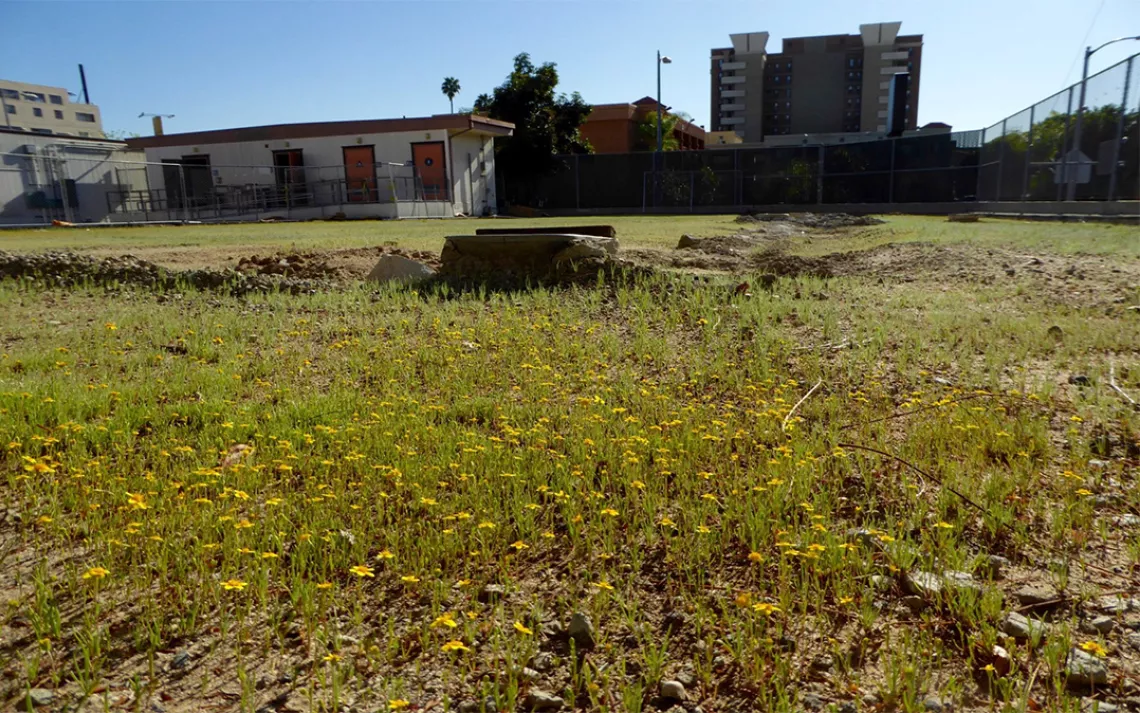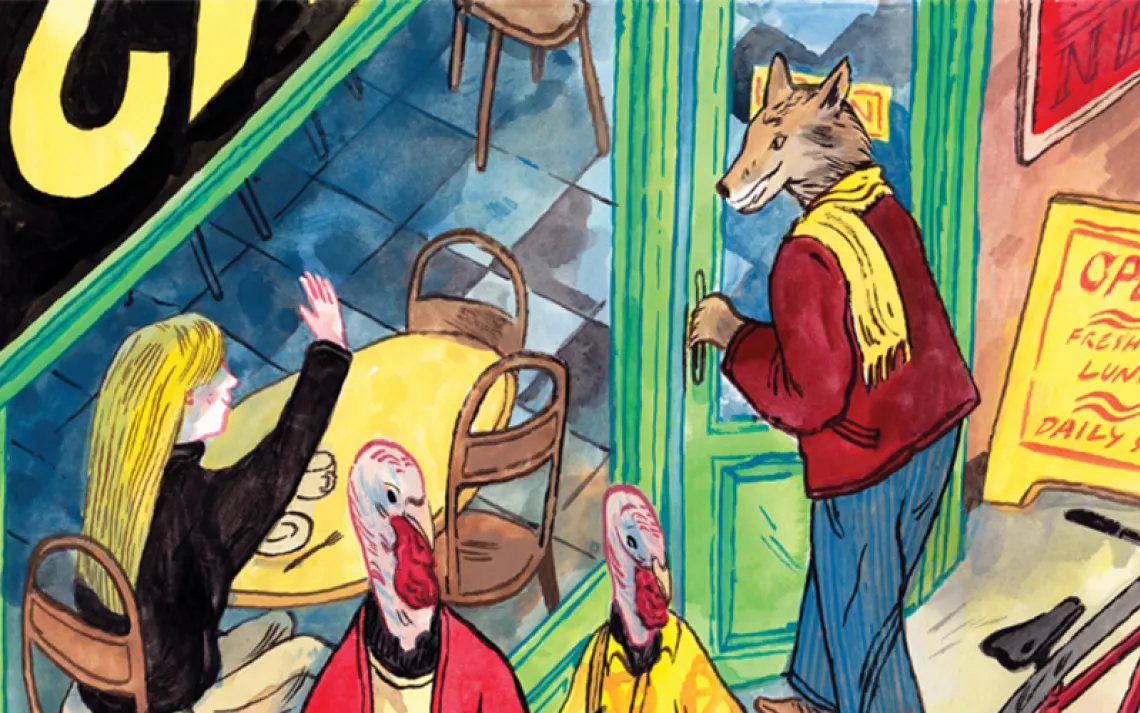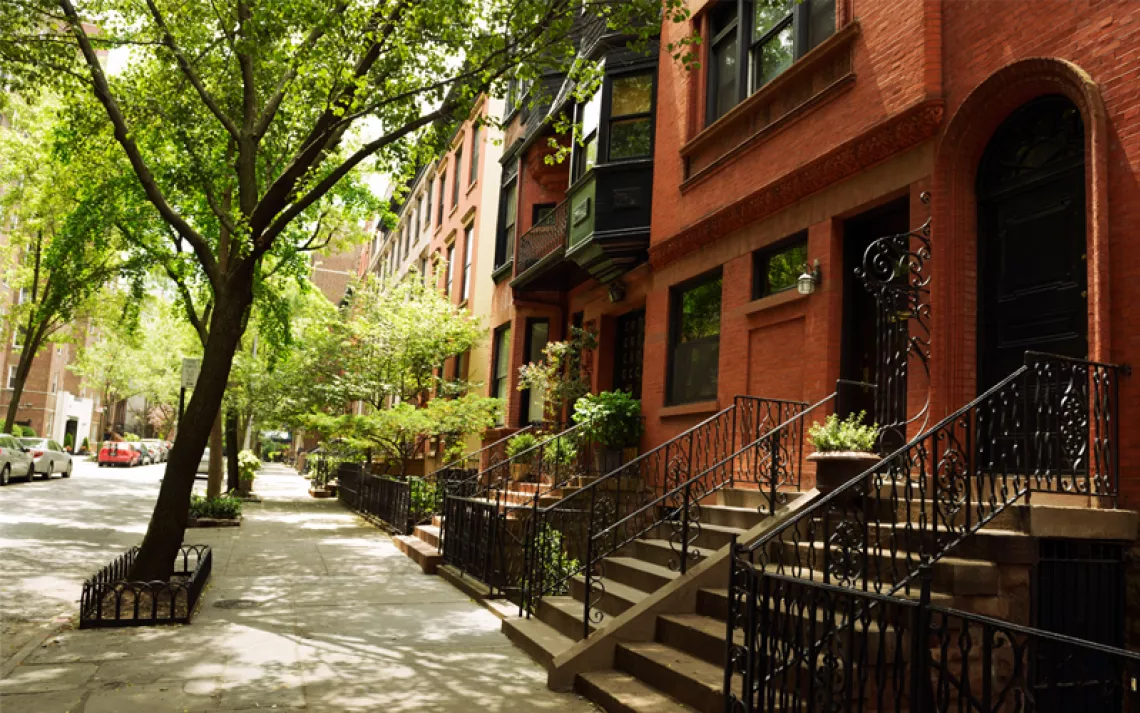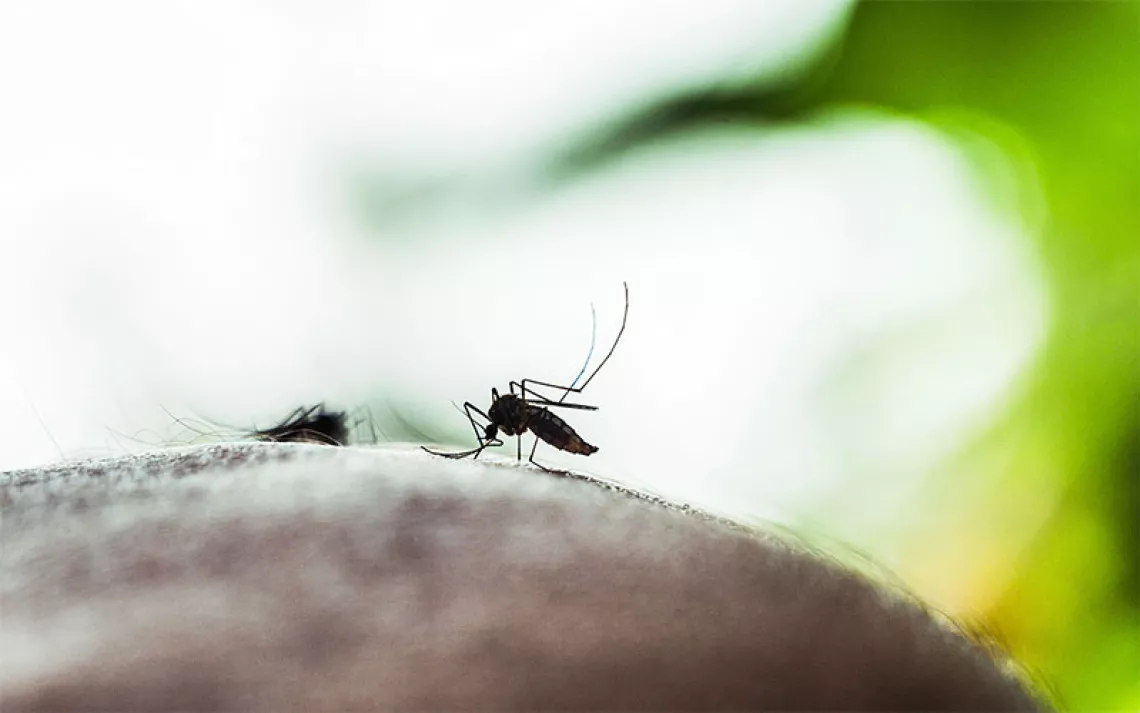The Rewilding of Wilshire Boulevard
An elementary school principal brings some greenery to the heart of LA

Photos courtesy of Brad Rumble
Most people would look right past the section of Wilshire Boulevard that caught Brad Rumble’s attention. Until recently, the short strip of concrete was filled with debris and barbed wire. But Rumble, principal of Esperanza Elementary, which sits just off the famous Los Angeles roadway, didn’t see clutter; he saw possibility.
Wilshire Boulevard runs 15 miles from Santa Monica to downtown, winding by the city’s tallest buildings, the Fox and MGM movie studios, and Koreatown. The densely developed strip isn’t known for its natural habitat. Only a few palm trees dot the four-lane (and sometimes eight-lane) road.
So Rumble decided to turn the section of the street that runs along the edge of the school parking lot into a green space with native plantings that could both attract wildlife and offer his students a place to learn about nature. He’s already completed the first phase of the project, ripping up the asphalt and weeding the 179-by-21 foot area. He’s received plenty of help from the Angeles Chapter of the Sierra Club, the Los Angeles Audubon Society, the Rancho Santa Ana Botanical Garden, and most important, from students and their parents. Funding has come in from UCLA’s philanthropy program and an anonymous donor. “We are embarking on the rewilding of Wilshire Boulevard,” he says.
Rumble hopes that reintroducing native plants to the street will set off a chain reaction. The flora will attract insects, with birds close behind. “Suddenly a 180-foot strip of Wilshire will be an attraction to native fauna of Southern California,” Rumble says.
As native species, the trees and shrubs should survive with a minimum amount of water—crucial in drought-stricken SoCal. The plantings will also alleviate the area’s heat-island effect and improve water runoff. Anne Scott-Putney, Rancho Santa Ana Botanic Garden’s director of development, and her team have worked with Rumble to choose the ideal plants and trees for the space. “There’s a rich biodiversity in California with 6,500 native species,” Scott-Putney says.
Rumble began the effort last year by greening a space on the other side of the school. Plantings there have already attracted paper wasps, European honeybees, and two morning doves that were nested in a giant coral tree (Erythrina).
Esperanza is located in the Westlake District, an area with one of the city’s highest population densities and fewest parks. “You couldn’t find a more urban school in LA,” Rumble says.
“It’s very park-poor,” says Roberto Morales, a community organizer from the Sierra Club’s Angeles Chapter. There’s less than 3.3 acres of park for every 1,000 residents. Morales and a team of volunteers pitched in last month to help clear the Wilshire section of concrete and get the soil ready for plantings.
How did a naturalist like Rumble end up working in the heart of the second largest school district in the country? He grew up in Northern California’s San Ramon where, he says, he was in the creek or up in the mountains every day. After attending UCLA and working for a while in Los Angeles, he says, “It was the absence of nature that brought out the naturalist in me.” He calls birding “going on a hike with a purpose.”
Now in his third year at Esperanza, Rumble already knows how beneficial connecting students to nature can be. He completed a similar project as principal of nearby Leo Politi Elementary and during his first year at Esperanza, he brought groups of third-graders to MacArthur Park to study ducks. “We did a six-week unit,” he says, studying mallards, which stay in the park year-round, and the ring-necked ducks that overwinter there. Before he knew it, his students were bandying about specialized words. Such activities aren’t just about connecting kids to nature, but also about engaging them in academic learning.
This is especially important at Esperanza—its past academic performance ranks it among the lowest-rated schools in the city. Many of its 860 students are first-generation immigrants, mostly from Guatemala. The vast majority are English-language learners whose families live below the poverty line.
Rumble extends outdoor learning inside, where students post their observations on a birding bulletin board. In the library, the principal proudly points out how each copy of Sibley’s Field Guide to Birds of Western North America is dog-eared.
The payoff for all the work will be when students use the Wilshire area to get firsthand experience with science concepts such as conservation, how plants affect water runoff, and bird identification.
“The challenge excited me, but I didn’t expect the pieces to fit so quickly,” he said. “The school district is now recognizing that this work can improve academic outcomes.”
 The Magazine of The Sierra Club
The Magazine of The Sierra Club







